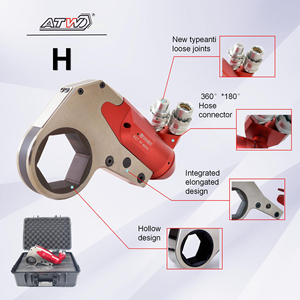Introduction to Compression Riveter
A compression riveter is an essential tool in various industries, designed to efficiently fasten metal or plastic components together using rivets. This specialized device provides a reliable method for creating strong, permanent connections that can withstand various stresses and strains. Whether you are in manufacturing, automotive, or construction, mastering the use of a compression riveter can significantly improve your productivity and the quality of your work.
Types of Compression Riveters
Compression riveters come in several types, each designed for specific applications and materials. Understanding these types will help you select the right tool for your needs:
- Manual Compression Riveters: Operated by hand, these tools are ideal for light to medium-duty tasks and are best suited for smaller projects.
- Pneumatic Compression Riveters: These powered tools use compressed air to increase efficiency and are perfect for large-scale projects requiring rapid riveting.
- Electric Compression Riveters: Offering the convenience of battery or corded operation, this type is versatile and suitable for both light and heavy-duty applications.
- Hydraulic Compression Riveters: Utilizing hydraulic pressure, these tools can handle very heavy materials, making them ideal for construction and complex fabrication tasks.
Applications of Compression Riveter
Compression riveters are versatile and find applications in various fields:
- Manufacturing: Used to assemble components in machinery, ensuring robust structures that can endure operational stresses.
- Aerospace: Essential in assembling aircraft parts where reliability and weight considerations are paramount.
- Automotive: Employed in creating strong, permanent joints for car body assemblies and interior fitting.
- Construction: Commonly used in structural applications to secure metal fascias and claddings.
Advantages of Using a Compression Riveter
There are several benefits associated with using a compression riveter that can enhance your workflow:
- Strength and Durability: Riveting creates strong joints that outperform other fastening methods, especially in high-stress environments.
- Speed and Efficiency: Compression riveters, particularly pneumatic and electric variants, allow for faster assembly, reducing labor costs and project time.
- Versatility: Suitable for a variety of materials, including aluminum, steel, and even plastic, compression riveters are adaptable to different applications.
- Ease of Use: Modern compression riveters are designed for user-friendliness, requiring minimal training to operate effectively.
How to Choose the Right Compression Riveter
Selecting the proper compression riveter is crucial for achieving optimal results. Here are some factors to consider:
- Type of Work: Assess whether your projects are light, medium, or heavy-duty to choose the correct type of riveter.
- Materials: Determine the type of materials you will be working with, as some riveters are better suited for specific materials.
- Power Source: Decide between manual, pneumatic, electric, or hydraulic based on your operational needs and workspace constraints.
- Portability: If you plan to use the riveter in various locations, consider a lightweight model or one that is easily portable.



























